Figure shows an arrangement of four identical rectangular plates A,B,C, and D each of area S. Find the charges appearing on each face (from left to right) of the plates. Ignore the separation between the plates in comparison to the plate dimensions.
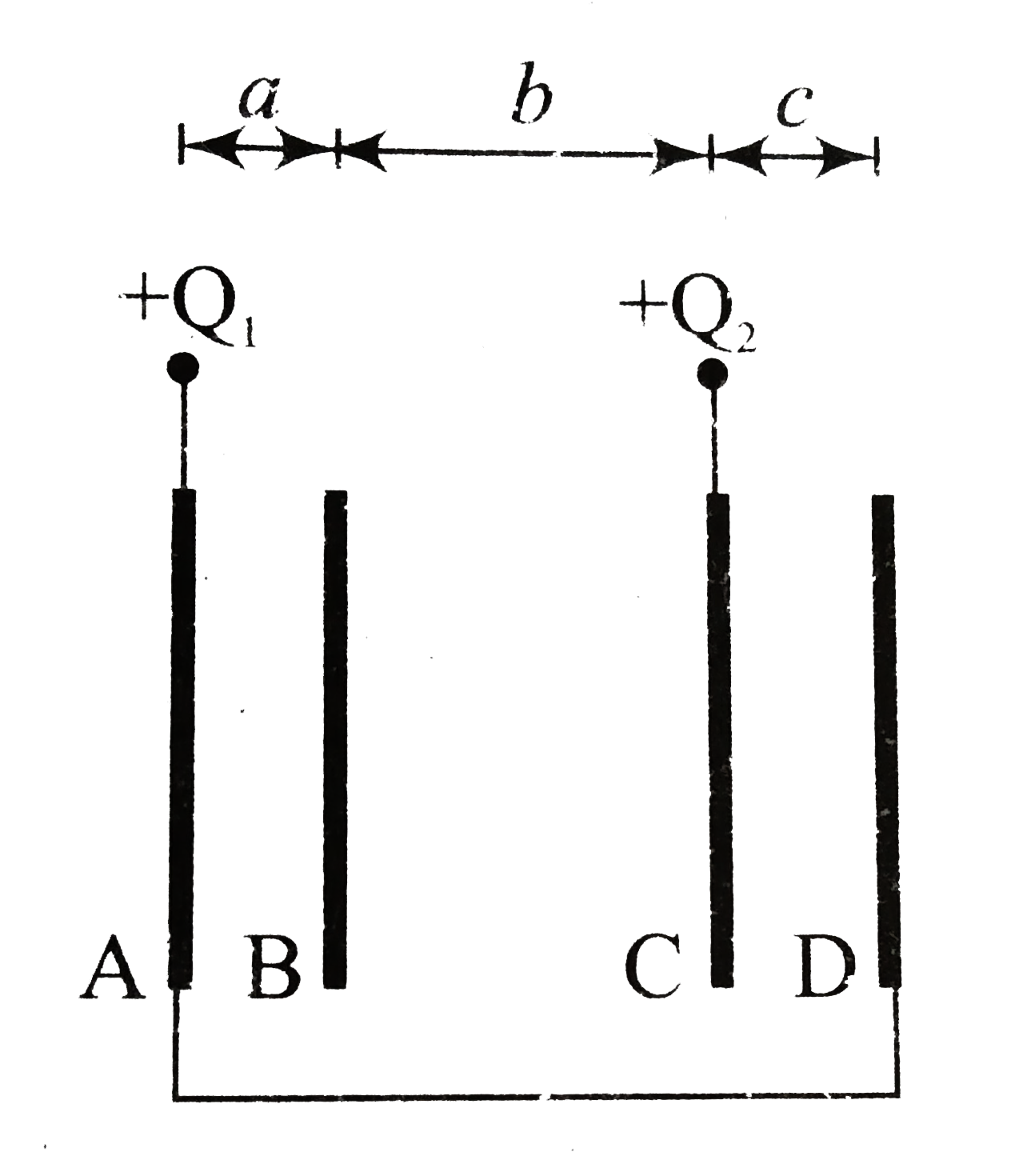
Potential difference between the plates A and B is independent of Q1.
Potential difference between plates C and D is independent of Q1
Potential difference between the plates A and B is independent of Q2.
Potential difference between plates C and D is independent of Q2
The correct Answer is:A, B
a.,b.
xa+xb+(Q2+x)c=0
x=−Q2ca+b+c
Q1=y+x+y−Q2−x
y=Q1+Q22
V=Q2ca(a+B+c)Sε0
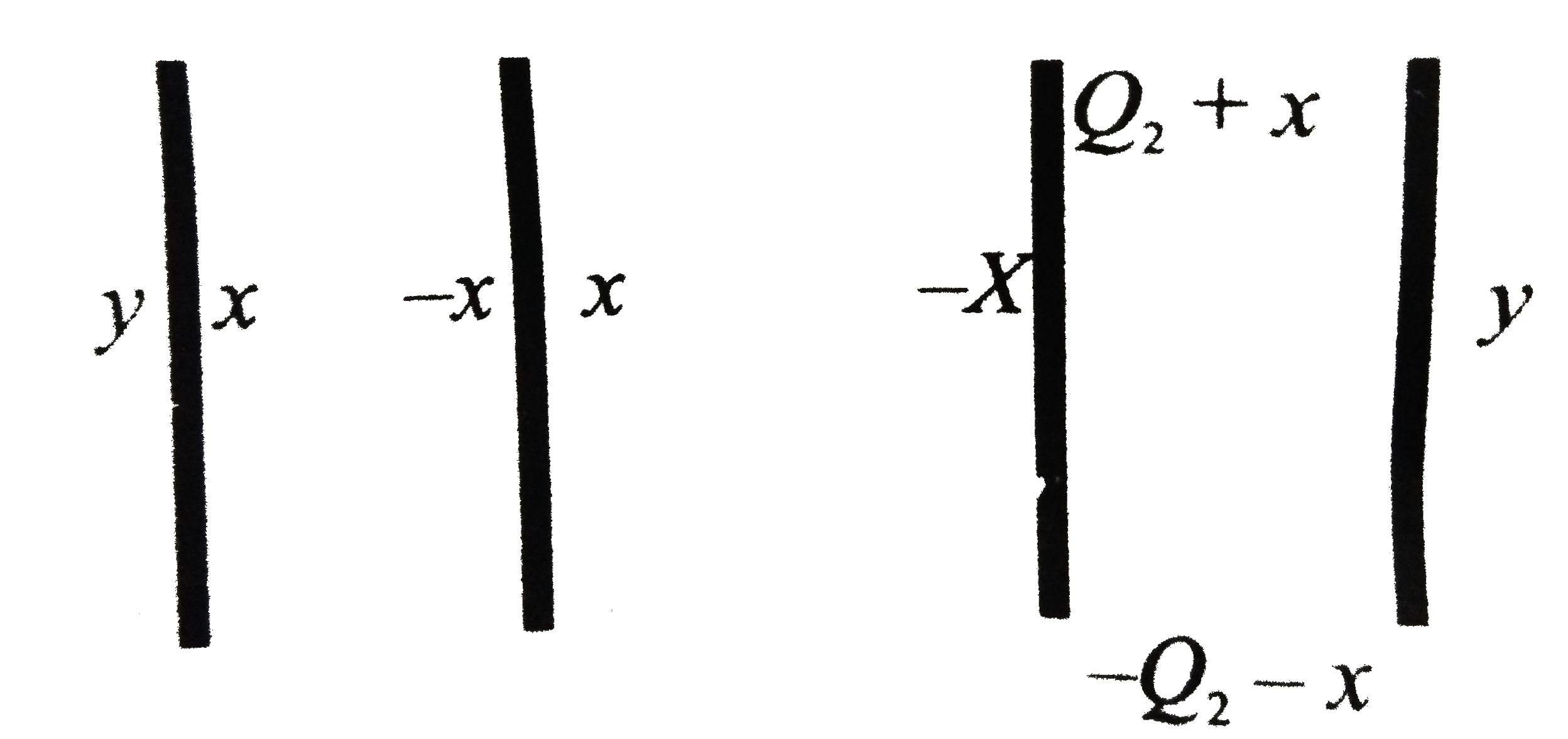
Similar Questions
Figure shows an arragement of four identical rectangular plates A, B, C and D each of area S.Thickness of plates is negligible. Then :
View SolutionFind the charge on each plate given area of each plate is A and separation between two consecutive plates is d.

View SolutionFind the equivalent capacitance between A and B.A: area of each plate, d: separation between the plates.
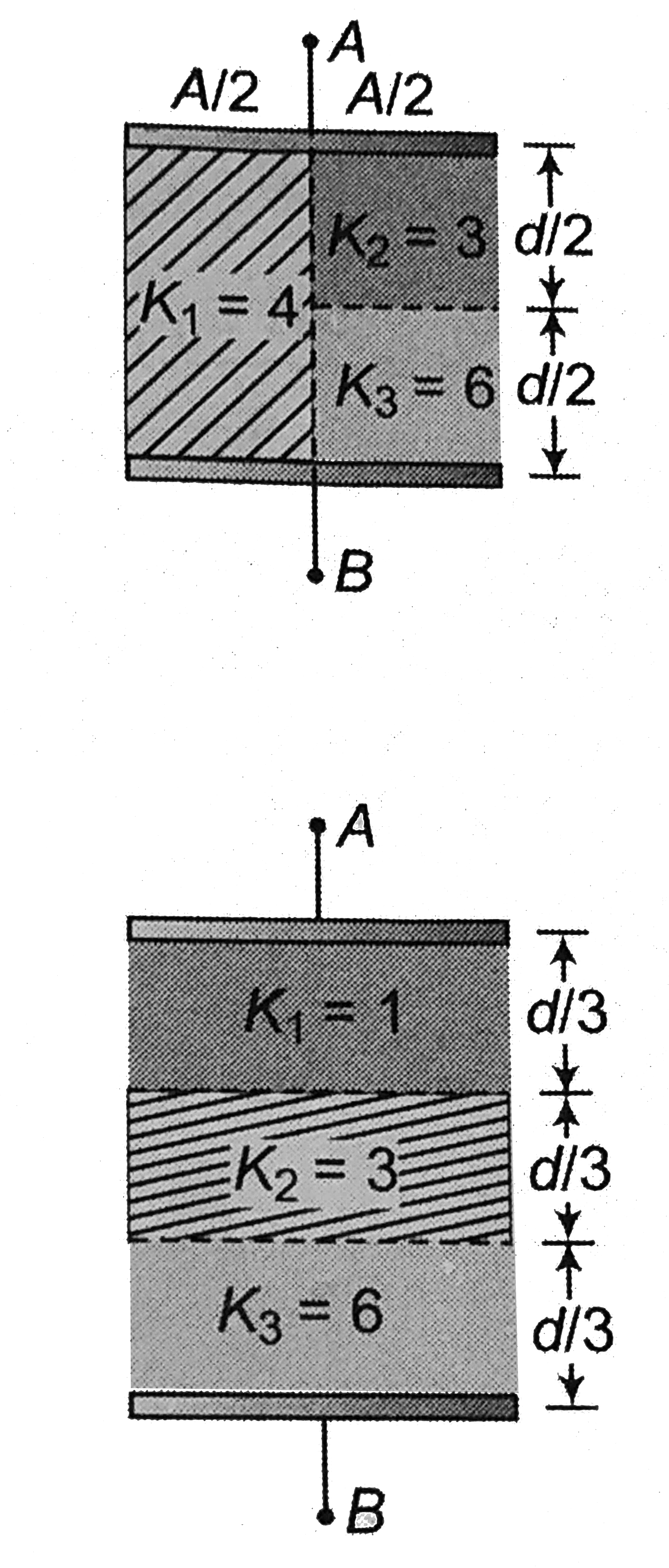
View SolutionFive plates are arranged as shown in the figure and connected across a battery of emf V. The separation between each plate is d and surface area of each plate is A.
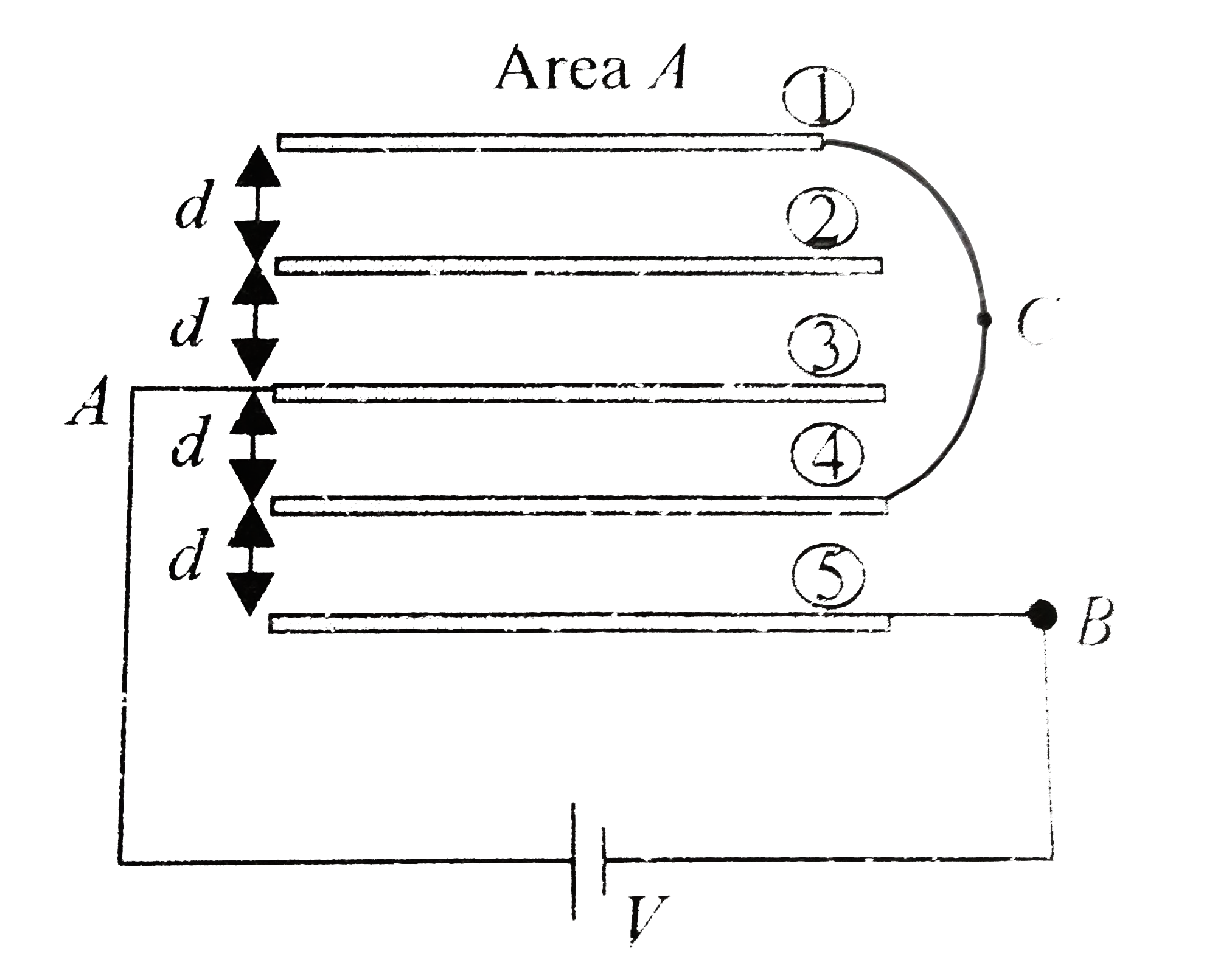
View SolutionThe diagram shows an arrangement of identical metal plates placed parallel to each other and the variation of potential between the paltes by dotted lilne. Using the details given in diagram, the equivalent capacitance connected across the plate No. 2 and plate No. 4 is
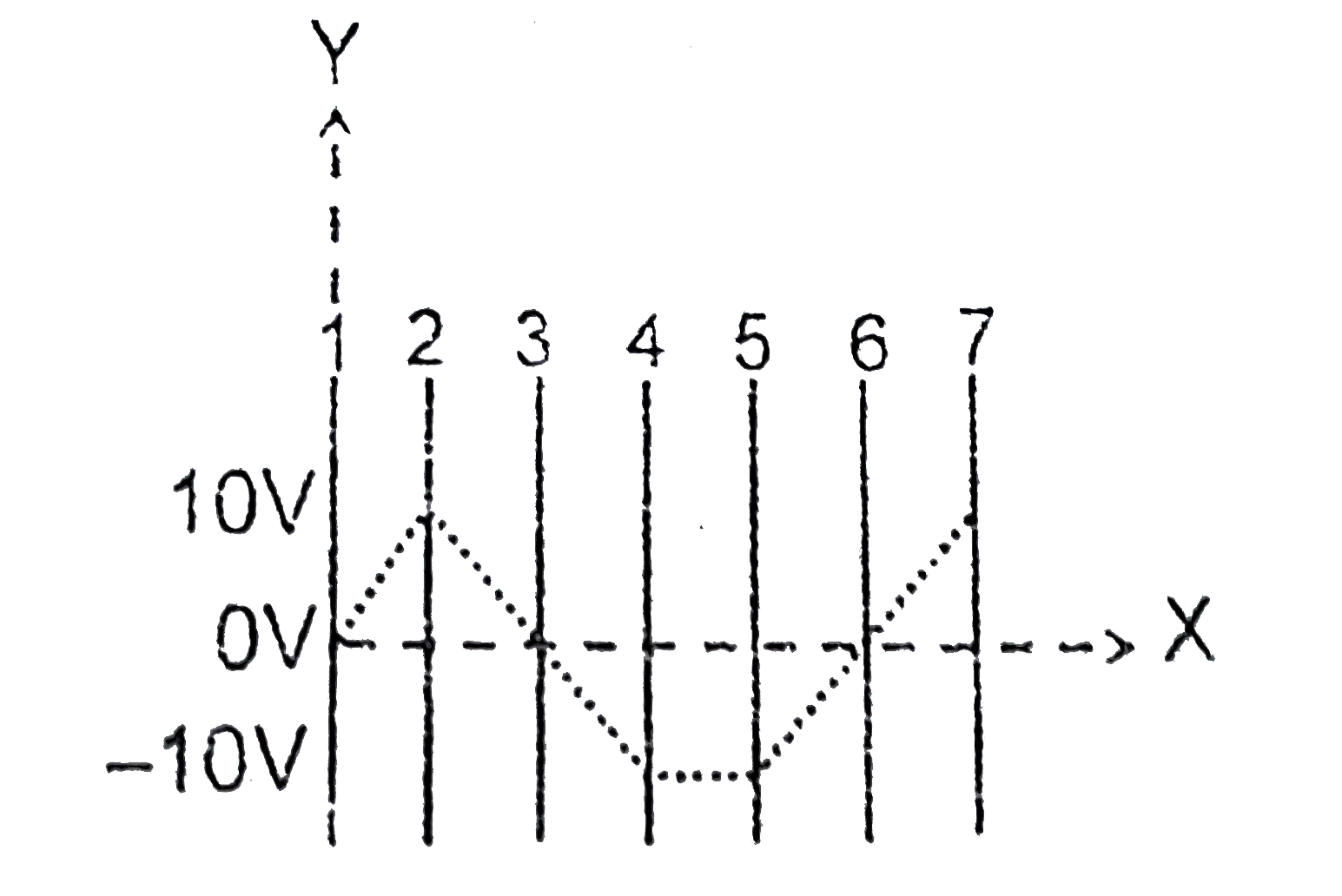
(Separation between the consecutive plates =L, area of each plate =A)
View SolutionFor the system shown in capacitance is C The left plate is given a charge Q1 and the switch is closed.
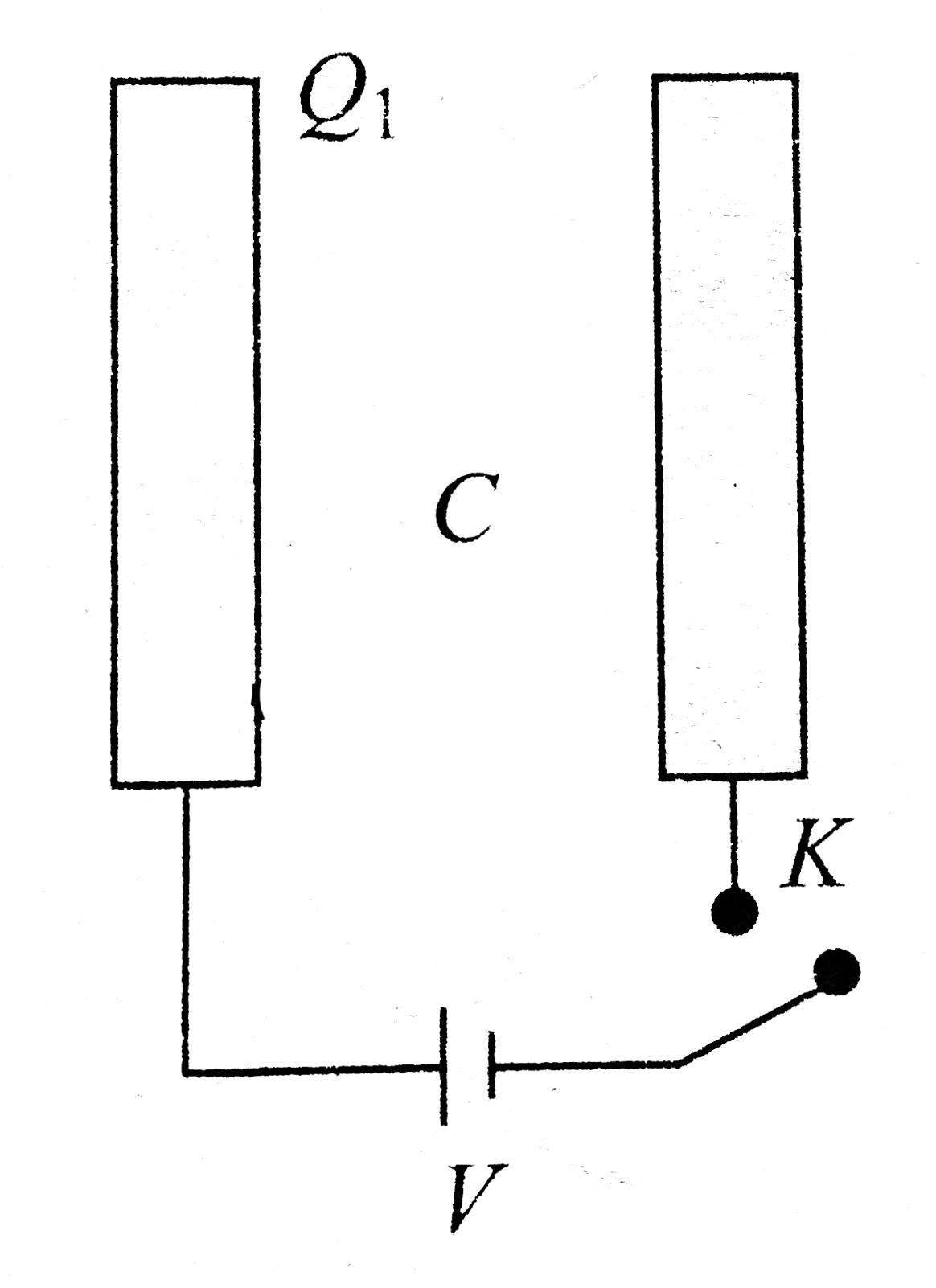 .
.
Find the charge appearing on the inner face of the left plate.
View SolutionThe nagative plate of a parallel plate capacitor is given a charge of −20X10−8C. Find the charges appearing on the four surface of the capacitor plates.
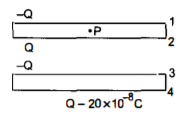
View SolutionIf the area of each plate is A and the separation between them is d, then find the equivalent capacitance between P and Q
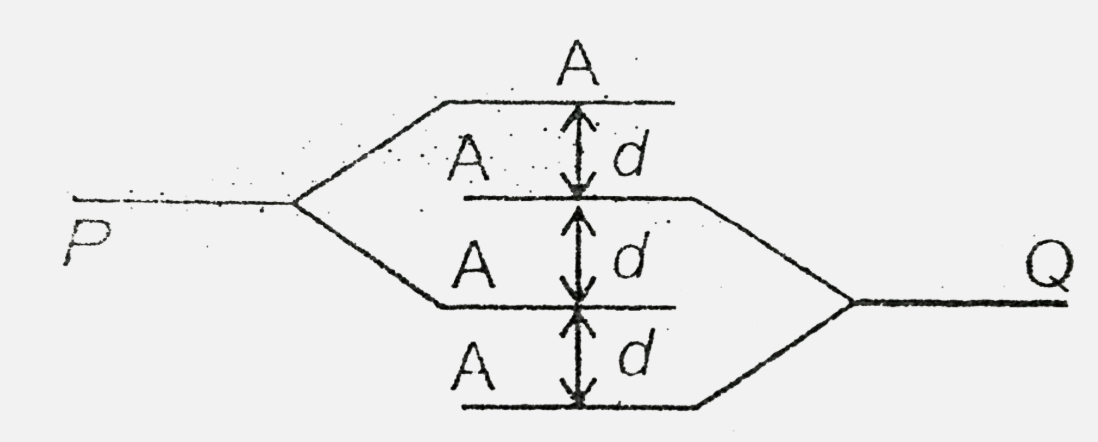
View SolutionTwo identical metal plates each having surface area A, having charges q1andq2, are placed facing each other at a separation d. Find the charge appearing on
surface (1),(2),(3), and (4). Assume the size of the plate is much larger than the separation between the plates.
View SolutionThe following arrangement consists of five identical metal plates parallel to each other. Area of each plate is A and separation between the successive plates is d. The capacitance between P and Q is
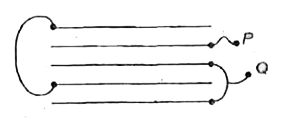
View Solution
